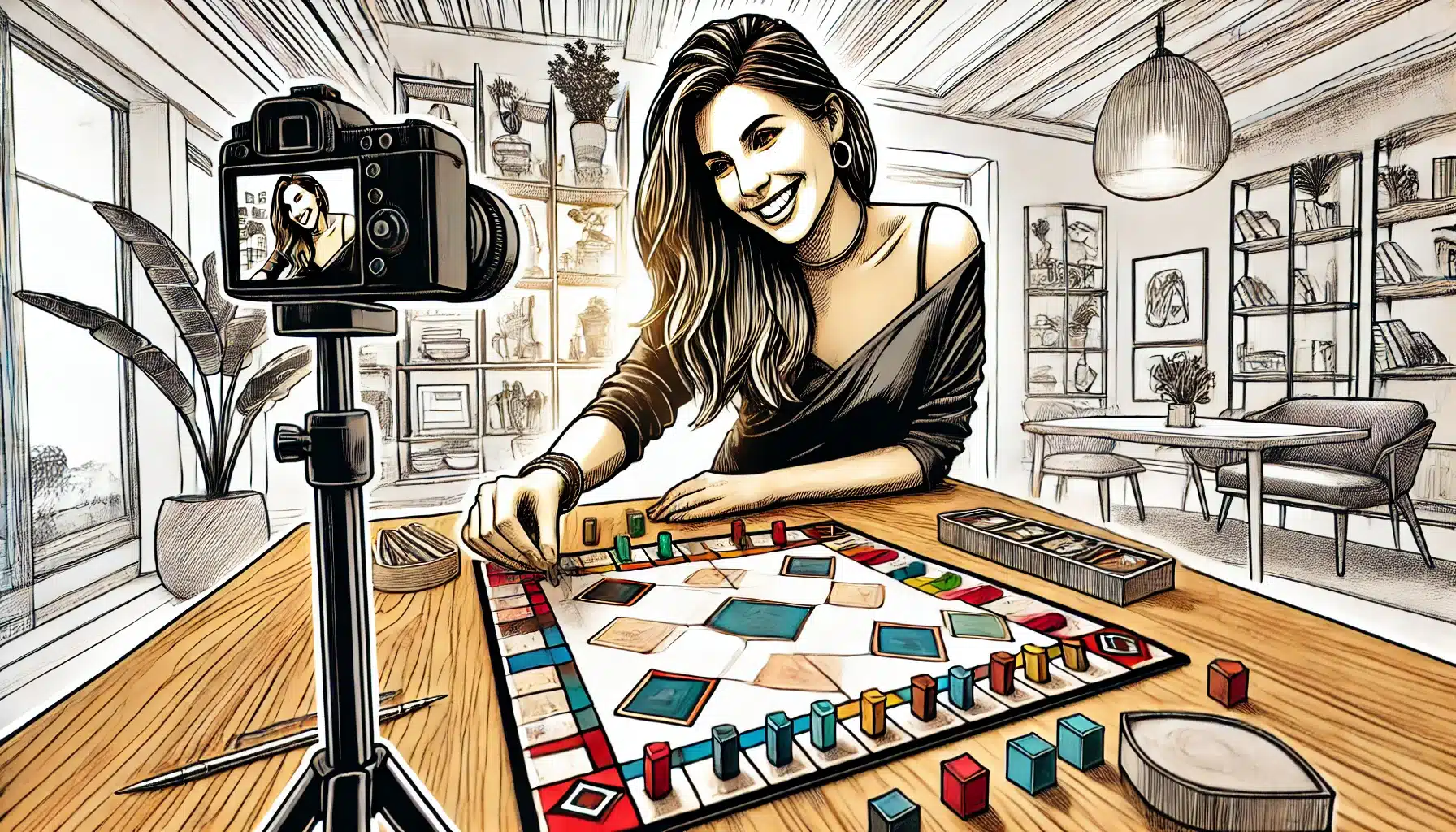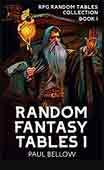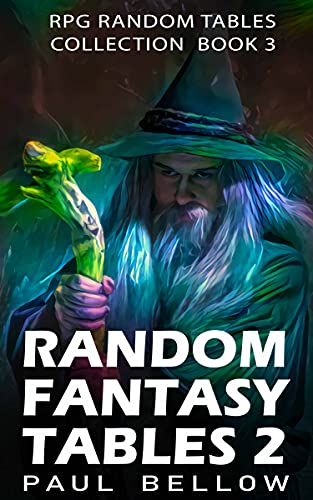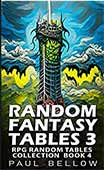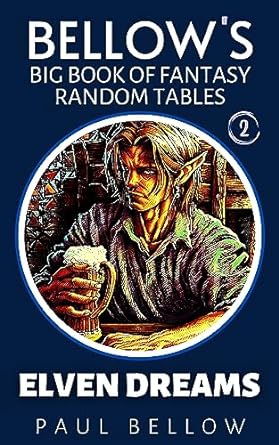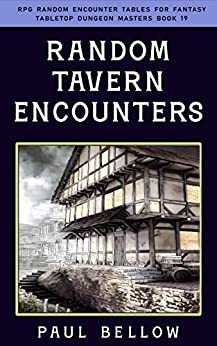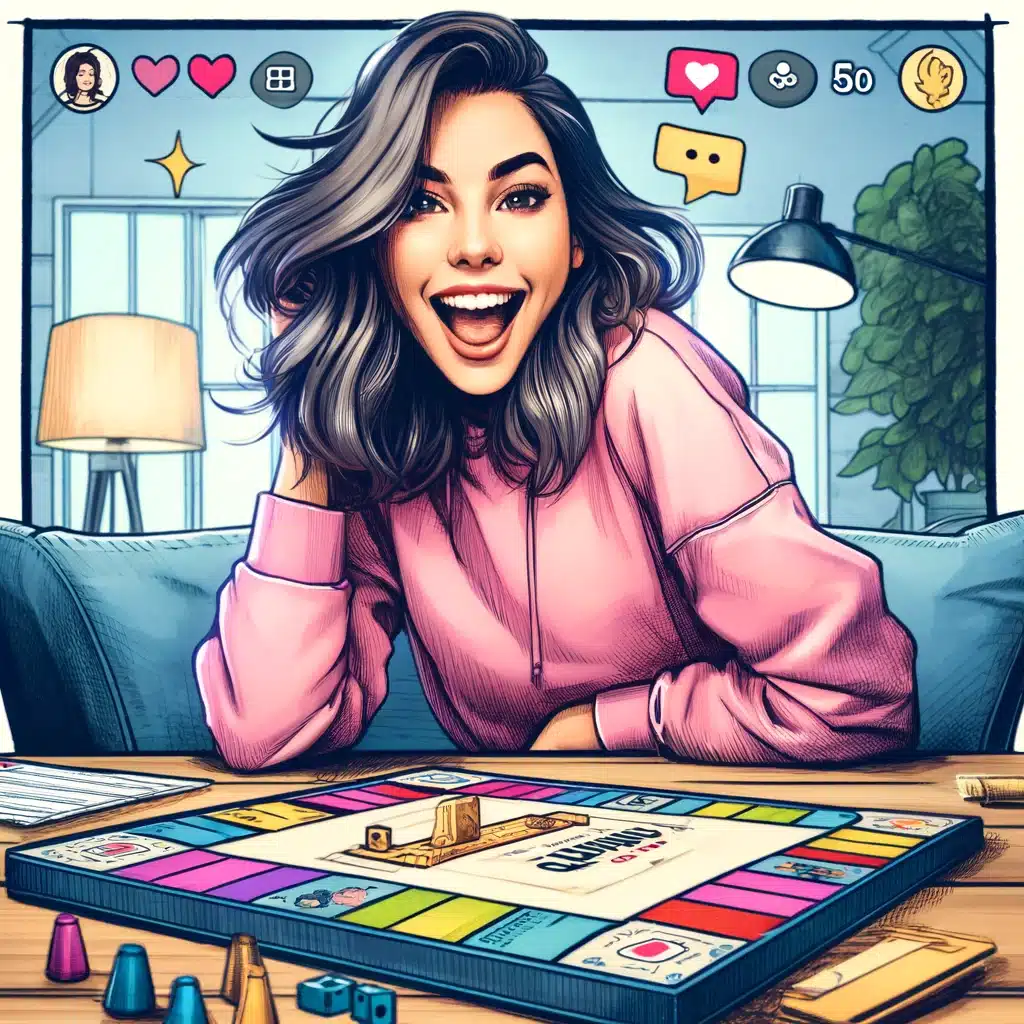
In recent years, board games have experienced a cultural renaissance, with their presence extending beyond the traditional realms of family gatherings and enthusiast circles. This resurgence can be attributed, in large part, to the influence of social media platforms such as TikTok and Instagram. These digital spaces have become vibrant marketplaces for ideas, aesthetics, and shared experiences, creating a fertile ground where board games can flourish. By tapping into the dynamic and visually driven content these platforms thrive on, board games have found a new lease on life in a rapidly evolving cultural landscape.
The visual appeal and shareable nature of these platforms have transformed board games from niche pastimes into viral sensations. They enable creators and enthusiasts to showcase the intricate art, unique mechanics, and social interactions that make board games appealing in the first place. When combined with the ability to reach millions of users instantly, the potential for board games to go viral is unprecedented. This is not merely about selling games; it’s about forming communities, sparking conversations, and creating shared experiences among diverse audiences.
As board games continue to tap into the power of TikTok and Instagram, they are increasingly viewed as mainstream entertainment. These platforms have democratized game promotion by allowing anyone with a smartphone to become a creator, reviewer, or enthusiast. The result is a grassroots movement where players and creators are equally engaged in the process of discovery and storytelling, redefining what it means to be a part of the board game community.
The synergy between social media and board games has also led to innovations in game design and marketing strategies. Companies are exploring new formats that leverage the shareable and interactive nature of these platforms to create games that resonate with a broader audience. This has paved the way for creative approaches that blend traditional gaming with modern storytelling techniques, appealing to a generation that thrives on immediacy and visual engagement.
Ultimately, the viral potential of board games on social media platforms like TikTok and Instagram underscores a broader shift in how we consume entertainment. This modern tabletop renaissance is driven by a sense of community, creativity, and accessibility, offering something for everyone—from casual players to seasoned strategists. As these platforms continue to evolve, they will undoubtedly play a pivotal role in shaping the future of board games and the communities that love them.
The Rise of Social Media-Driven Board Game Popularity
The meteoric rise in popularity of board games through social media channels is a fascinating cultural phenomenon. Platforms like TikTok and Instagram have revolutionized how games are presented and perceived, propelling them from living room pastime to viral hits. These platforms, with their emphasis on visually engaging content and community involvement, have drawn audiences into narratives that go beyond the games themselves.
Try my AI Tabletop RPG generators...and an extensive library of content!
TikTok, in particular, has become a powerhouse for board game enthusiasts. The platform’s short-form video format is perfect for showcasing the excitement of gameplay, the satisfaction of unboxing new games, and the quick highlights of strategic moves. Creators can craft content that is both entertaining and informative, capturing the unique appeal of each game while reaching millions of viewers who might never have considered themselves board game fans.
Instagram, with its focus on aesthetics and imagery, complements this by allowing creators to delve into the visual aspects of board games. Vibrant photos of game setups, intriguing components, and thematic art draw in users and inspire them to learn more. The platform’s Stories feature also allows for creative storytelling, helping games build intricate narratives that entice followers into the unfolding drama of each play session.
This coupling of TikTok and Instagram has also encouraged an unprecedented level of interaction between game creators and their audience. The direct communication channels that social media platforms offer allow companies to receive immediate feedback, understand player preferences, and adapt their strategies accordingly. Players, on the other hand, feel a stronger connection to the games they love and the communities built around them, fostering a sense of belonging and shared excitement.
The viral rise of board games on social media is not just a fleeting trend but a testament to the adaptability and resilience of this form of entertainment. By embracing the new digital ecosystem, board games have managed to remain relevant in an increasingly fast-paced, digitally-oriented world. This renaissance is a celebration of both tradition and innovation, breathing new life into a beloved hobby for generations to come.
⚔️ Fantasy RPG Random Tables Books
Make life as a Gamemaster easier…
If you play Dungeons & Dragons, Pathfinder, or other fantasy RPGs, this
RPG random tables series
is packed with encounters, NPCs, treasure, and more. Available in eBook or print—either way, you’ll have a wealth of adventure ideas at your fingertips.
How TikTok and Instagram Changed the Game
TikTok and Instagram have reshaped the board game landscape by using the power of social media to amplify games’ reach and appeal. These platforms have become instrumental in changing how games are discovered, shared, and experienced, tapping into the zeitgeist of social engagement and multimedia storytelling.
- Unboxing videos spark curiosity and excitement, turning the simple act of opening a new game into a shared adventure.
- Influencer endorsements lend credibility and broaden reach, as familiar faces introduce games to their followers.
- Visually engaging game pieces showcased in posts capture attention and build buzz around game aesthetics.
- Short how-to reels provide accessible learning opportunities, demystifying gameplay and lowering the entry barrier for new players.
- Algorithm boosts on these platforms mean that popular content can reach viral status quickly, amplifying exposure.
- Themed game nights or challenges encouraged online build community and drive trends, creating a sense of collective participation.
- User-generated content featuring funny gameplay moments or strategies invites organic growth and player engagement.
- Branded hashtags create a sense of cohesion and identity, allowing posts to be easily found and connected.
- Collaborations between creators and game designers lead to innovative promotions and fresh perspectives on games.
- Interactive polls and Q&A sessions foster dialogue between developers and fans, enhancing game development and enjoyment.
- Time-limited content, such as Instagram Stories, creates a sense of urgency and immediacy in game promotion.
- Behind-the-scenes glimpses into game development personalize the experience and build anticipation.
- Viral challenges or trends based on game mechanics encourage user creativity and involvement.
- Engaging with fan art and cosplay extends the game’s universe and celebrates community talents.
- Contests and giveaways leverage platform features to incentivize sharing and discovery.
These tools have redefined how games connect with players, making social media an indispensable ally in the modern board game renaissance.
As these digital platforms continue to evolve, they will undoubtedly further influence the growth and creativity within the board game industry. They offer unprecedented opportunities to amplify voices, broaden horizons, and deepen connections with players worldwide. Through social media, board games have embraced a vast, interconnected playground where innovation thrives, and the potential for viral success is only a post away.
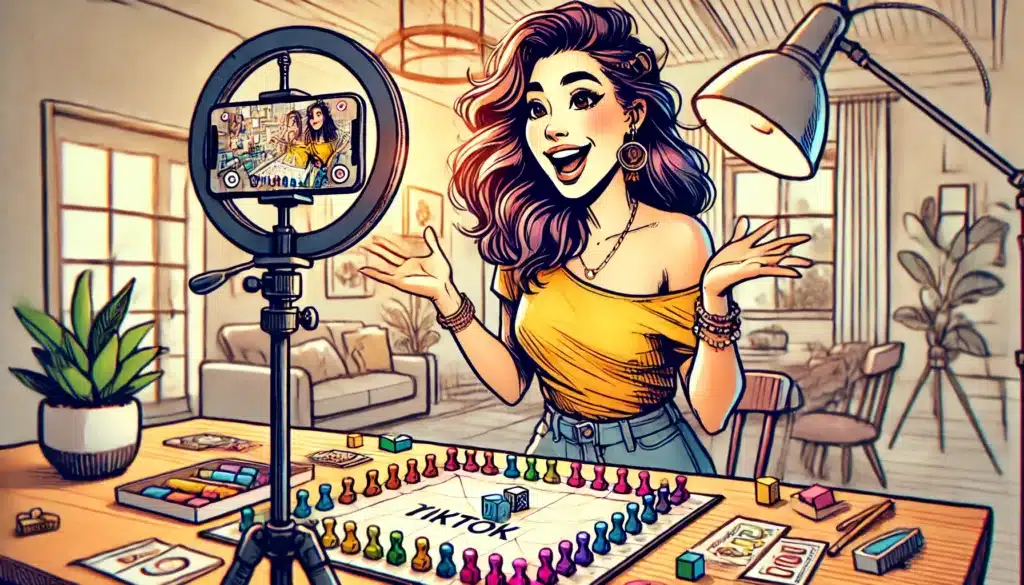
The Demographic Shift: Reaching a Younger Audience
Social media platforms have not only elevated board games to new heights but have also catalyzed a demographic shift, drawing in a younger audience eager to engage with modern storytelling. This shift is characterized by an appetite for quick, engaging content and a desire to be part of the broader community. As a result, the traditional perception of board games as an older generation’s pastime is being transformed.
Young audiences are particularly attracted to the visually appealing elements of games. The unique designs and artistic components showcased on Instagram cater to this demographic’s aesthetic inclination, while TikTok’s dynamic video format helps capture the attention of viewers with engaging, high-energy content. The instant gratification found in short, punchy videos aligns with the preferences of younger players who seek entertainment that resonates with their fast-paced digital lives.
The inherent social aspects of platforms like TikTok and Instagram have facilitated the growth of vibrant communities around board games, where young players can connect, share experiences, and partake in collective storytelling. These platforms enable young audiences to explore games not just as isolated sessions of play but as part of an ongoing narrative in which they are active participants. This communal experience enhances the appeal of board games, fostering a sense of belonging among new players.
Moreover, this demographic shift is supported by the intersection of nostalgia and modernity. Younger audiences are often drawn to the nostalgic elements present in board games, such as familiar characters or themes reminiscent of childhood. At the same time, they appreciate the new innovations and creative storytelling that resonate with their current cultural interests. This duality effectively bridges generational gaps, engaging both new and seasoned players.
| Traditional Audience | New Younger Audience | Overlapping Traits |
|---|---|---|
| Motivated by nostalgia | Attracted by innovative design | Both enjoy social experiences |
| Primarily family gatherings | Social media-driven discovery | Creativity in play |
| Consistent gameplay habits | Dynamic, fast-paced engagement | Puzzles and challenges |
| Longer gameplay preference | Shorter, more frequent play sessions | Shared nostalgia for themes |
| Enjoys extensive setups | Prefers minimal setup | Accessible rulesets |
| Focus on strategy and depth | Focus on creativity and immediacy | Imagination-rich experiences |
| Limited online engagement | Strong online community presence | Collective participation |
| Infrequent game night events | Frequent virtual game gigs | Storytelling appeal |
| Collecting for legacy | Collecting for aesthetic value | Love for game rituals |
| Physical components favored | Digital or hybrid experiences | Captivated by mystery |
| Influenced by word of mouth | Influenced by trends and hashtags | Engagement through discovery |
| Steady pace of innovation | Rapid adoption of new titles | Appreciation for craftsmanship |
As the demographic landscape of board games continues to transform, companies and creators are adapting their approach to cater to these younger audiences. By leveraging the strengths of social media, they can engage with a more diverse player base and sustain interest across generations. This evolution reflects not only changing tastes but also the adaptability of board games as a medium for storytelling and connection.
The engagement and creativity brought by younger players have reinvigorated the board game industry. They have introduced fresh perspectives, driven innovation, and fostered communities that celebrate diversity and inclusivity. As these trends continue to evolve, one can expect board games will remain a dynamic and relevant form of entertainment, bridging generations and creating new traditions in the process.
From Niche to Mainstream: Viral Hits and Trendsetters
Social media platforms have unleashed a wave of viral success for board games, transforming them from niche interests into mainstream sensations. This transition is a testament to the persuasive power of digital marketing and the magnetic appeal of well-designed games that capture the imagination of players worldwide. By embracing social media’s potential, many games have risen from obscurity to stardom, redefining success within the industry.
The viral journey of many games often starts with creative presentations that highlight their unique selling points in quick, engaging formats. TikTok influencers, Instagram content creators, and enthusiastic players become brand ambassadors, sharing their experiences and sparking organic growth through likes, shares, and comments. This grassroots promotion helps propel games into the spotlight, creating a ripple effect that reaches far beyond traditional marketing’s capabilities.
Some games achieve viral status by tapping into universal themes or experiences that resonate deeply with audiences, while others leverage innovative mechanics and design quirks that differentiate them from their peers. Whether through evocative storytelling, quirky humor, or strategic depth, these games capture the hearts and minds of players who share their enthusiasm with their networks, amplifying the game’s reach exponentially.
⚔️ Fantasy RPG Random Tables Books
Make life as a Gamemaster easier…
If you play Dungeons & Dragons, Pathfinder, or other fantasy RPGs, this
RPG random tables series
is packed with encounters, NPCs, treasure, and more. Available in eBook or print—either way, you’ll have a wealth of adventure ideas at your fingertips.
The rise of viral board games has also catalyzed a sense of community among players, who form tight-knit groups united by a shared passion for these innovative titles. Online forums, social media groups, and review sites become hubs for discussion, analysis, and celebration of these games, fostering a lively culture of engagement and participation. This community-driven approach reinforces the games’ appeal and ensures their continued success in a competitive market.
- Exploding Kittens: A quirky card game that gained momentum with memorable art and humor, showcased in bite-sized Instagram Stories.
- Wingspan: Celebrated for its beautiful design and educational nature, praised by TikTokers for its balance of strategy and aesthetics.
- Gloomhaven: An epic strategy game that captured the imaginations on Reddit and Instagram, drawing praise for its expansive narrative.
- Codenames: Gained traction through influencer-hosted online parties and TikTok clips highlighting its social deduction fun.
- Root: Its asymmetric gameplay and delightful art found a dedicated audience through board game reviews and Instagram features.
- Spirit Island: Gained a following for its cooperative play and theme of liberation, shared widely in complex strategy discussions.
- Azul: Became a staple for its simple mechanics but beautiful components, gaining a reputation on Instagram for its visual appeal.
- Parks: Highlighted for its stunning visuals and evocative theme, gaining traction through nature-focused influencer collaborations.
- The Mind: A minimalist game that caught fire with TikTok demonstrations of its silent communication mechanics.
- Quacks of Quedlinburg: Its chaotic potion-making gameplay shared in lively TikTok reels and immersive Instagram stories.
- Cryptid: Known for its innovative deduction, it found fans through social media game nights documented with immersive storytelling.
- Cascadia: Highlighted by content creators for its serene ecological theme and tactical gameplay; praised by TikTok environmentalists.
- The Crew: Celebrated for its cooperative challenge, gaining recognition through detailed playthrough posts on Instagram.
- 7 Wonders: A classic strategy game revived through the platform’s thematic explorations and dynamic gameplay showcased online.
- Nemesis: A sci-fi horror game whose tense moments and cinematic feel spread rapidly through TikTok and fan-made scenarios.
The shift from niche interest to mainstream darling reflects a broader trend of community engagement in today’s media landscape. As audiences participate in the proliferation of these games, they become active contributors to their success, shaping their trajectories as they share and celebrate these viral hits.
The board game industry’s embrace of social media has opened a new chapter of creativity and accessibility, positioned at the intersection of entertainment and interaction. The democratization of game promotion empowers players to influence industry trends, ensuring that games are not just consumed but experienced as part of a shared cultural moment. As this synergy between creators and audiences continues, board games will remain a vibrant part of mainstream entertainment.
The Mechanics of Going Viral
The process of making a board game go viral is akin to choreography, where each step combines to create a memorable experience that captures the audience’s imagination. Central to this is the delicate balance of creativity and strategy—designing games that are not merely fun to play but also visually captivating and easily shareable. TikTok and Instagram, with their visual and dynamic nature, provide fertile ground for this process, enabling games to showcase their most appealing aspects in ways that resonate with contemporary audiences.
Going viral requires understanding the mechanics that drive this phenomenon—what makes a game stand out in crowded feeds, how it captures attention within seconds, and what compels viewers to engage and share with others. These platforms thrive on visual stimulation, and games that harness this by leveraging their most photogenic elements often find success. Whether it’s bold color schemes, intricate illustrations, or innovative designs, these visual hooks invite users to pause, appreciate, and participate in the experience.
Another critical factor is the inherent shareability of the game. Games that offer quick, engaging gameplay or that can be easily explained in a short video clip resonate well with social media audiences. They lend themselves to playful demonstrations that highlight key moments, twists, or strategic depth without overwhelming the viewer. This approach not only generates buzz but also demystifies the game, making it accessible to a wider audience.
In this viral ecosystem, the role of influencers and community creators cannot be overstated. They act as social media guides and tastemakers, their endorsements lending legitimacy and appeal to games. By sharing personal experiences and insights, influencers bridge the gap between game creators and players, creating a narrative that invites viewers into the community and encourages participation. This personal engagement transforms abstract concepts into lived experiences, propelling games from obscurity to cultural touchstones.
Try my AI Tabletop RPG generators...and an extensive library of content!
The Role of Visual Appeal and Game Design
Visual appeal plays a crucial role in a board game’s viral success, enticing potential players with eye-catching components and compelling aesthetics. This appeal is further enhanced by thoughtful game design, which incorporates elements that are not only pleasurable to behold but also crucial to gameplay. In this way, visuals and design work hand-in-hand to attract and captivate audiences, encouraging them to engage with the game on a deeper level.
The careful selection of color palettes, art styles, and component quality can significantly impact a game’s popularity. Games that use bold colors and unique designs naturally draw attention on platforms geared towards visual media. It’s not just about being noticed; it’s about creating an aesthetic experience that draws users into the game’s world and makes them want to share it with others. This can be seen in games with intricate board designs, detailed miniatures, or thematic art that tells a story before the first move is even made.
An engaging game design not only enhances visual appeal but also adds layers of depth to the gameplay experience. This involves creating mechanics that are intuitive yet offer strategic depth, making the game easy to learn but challenging to master. Games that leverage innovative mechanics or twists on traditional gameplay attract players looking for something fresh and engaging. These elements provide players with moments of surprise and delight that are likely to be shared with friends and followers.
| Game Title | Visual Elements | Gameplay Highlights | Social Shareability | Viral Hooks |
|---|---|---|---|---|
| Azul | Colorful mosaic tiles | Simple but strategic play | Photogenic table setups | Visual beauty, puzzling |
| Codenames | Cleverly illustrated cards | Word association challenges | Easy to create quick vids | Simple rules, engaging |
| Wingspan | Bird illustrations | Engine-building mechanics | Stunning art on cards | Nature theme, educational |
| Root | Characterful animal art | Asymmetric gameplay | Storytelling potential | Charming art, depth |
| The Mind | Minimalist design | Silent communication | Quick demonstrations | Unique gameplay |
| Gloomhaven | Detailed character pieces | Expansive narrative | Epic story-building | RPG elements, co-op |
| Spirit Island | Vibrant map and cards | Thematic cooperation | Strategic discussions | Strategic depth, story |
| Quacks of Quedlinburg | Quirky potion components | Potion making chaos | Fun, chaotic clips | Humor, strategic chaos |
| Cascadia | Beautiful nature scenes | Tile-laying puzzle | Relaxing gameplay | Eco-friendly theme |
| The Crew | Space-themed art | Cooperative card play | Real-time group gaming | Teamwork, shared goals |
| Parks | Scenic art cards | National park exploration | Inspiring photography | Nature theme, travel |
| Nemesis | Detailed sci-fi pieces | Horror and strategy mix | Tense gameplay moments | Cinematic feel, tension |
| Dixit | Surreal art on cards | Creative storytelling | Personal interpretation | Open-ended play, art |
| Hive | Elegant hexagonal pieces | Abstract strategy | Simple but deep tactics | Minimalist design, depth |
| Splendor | Gem-themed art and tokens | Fast-paced engine-building | Beautiful component shots | Visual simplicity |
Social media platforms are particularly adept at amplifying these viral hooks—be it through the showcase of stunning visuals or the intrigue of unique mechanics. The instantaneous nature of content sharing enables games to achieve widespread recognition quickly, bolstering both interest and demand. For game creators, the focus on visual appeal and game design becomes a critical component in harnessing the power of social media for viral success.
As board games continue to navigate this visually driven environment, creators must remain mindful of the delicate balance between aesthetic splendor and gameplay mechanics. By creating games that are both visually captivating and strategically engaging, they can ensure their creations not only catch the eye but also capture the imagination of players worldwide.
Influencers, Micro-Celebrities, and Content Creators
In the world of board games, influencers, micro-celebrities, and content creators play pivotal roles as the vanguards of viral success. These individuals, ranging from passionate gamers to established online personalities, bridge the gap between the board game industry and the broader public. Their influence extends beyond mere product placement; they shape narratives, inspire communities, and drive engagement through creative storytelling and personal interaction.
- Reviewers provide in-depth game analysis, offering insights into gameplay mechanics and overall experiences that help potential players make informed choices.
- Demo players showcase games in action, demonstrating rules and strategies while engaging viewers in the excitement of gameplay.
- Community hosts organize virtual game nights and events that foster a shared sense of camaraderie among players.
- Meme creators use humor to distill complex gameplay elements into relatable and shareable content.
- Trend starters set the tone for new gaming experiences, spotlighting innovative mechanics or themes that capture the zeitgeist.
- Tutorial producers craft clear, concise guides that demystify rules and lower barriers to entry.
- Unboxing experts highlight the unwrapping experience, transforming it into an anticipation-filled event.
- Storytellers immerse audiences in the game’s lore, weaving narratives that breathe life into the gameplay experience.
- Collaborators partner with designers to launch exclusive content, offering followers unique insights and early access.
- Brand ambassadors enhance credibility, endorsing games based on personal enjoyment and their alignment with audience interests.
Influencers have an unparalleled ability to connect with audiences on a personal level. They curate authentic experiences that resonate deeply, fostering trust and loyalty among their followers. Their endorsements often serve as powerful catalysts for market trends, with their recommendations carrying significant weight in a purchaser’s decision-making process. Through witty commentary, engaging storytelling, and dynamic interaction, influencers propel games from obscurity to widespread acclaim.
Through this lens of influence, board games transcend their traditional boundaries and engage audiences in novel ways. The interplay between creators and communities leads to a reinforced sense of connection, with each new video or post contributing to a shared narrative that celebrates the joy of play. As social media continues to evolve, the role of influencers in the board game industry will undoubtedly expand, creating new opportunities for creativity and collaboration.
In this vibrant ecosystem, influencers, micro-celebrities, and content creators are instrumental in fostering player engagement, driving game discovery, and shaping the broader culture of board gaming. Through their efforts, board games are not just experienced but celebrated as dynamic, interactive art forms that unite people across the globe.
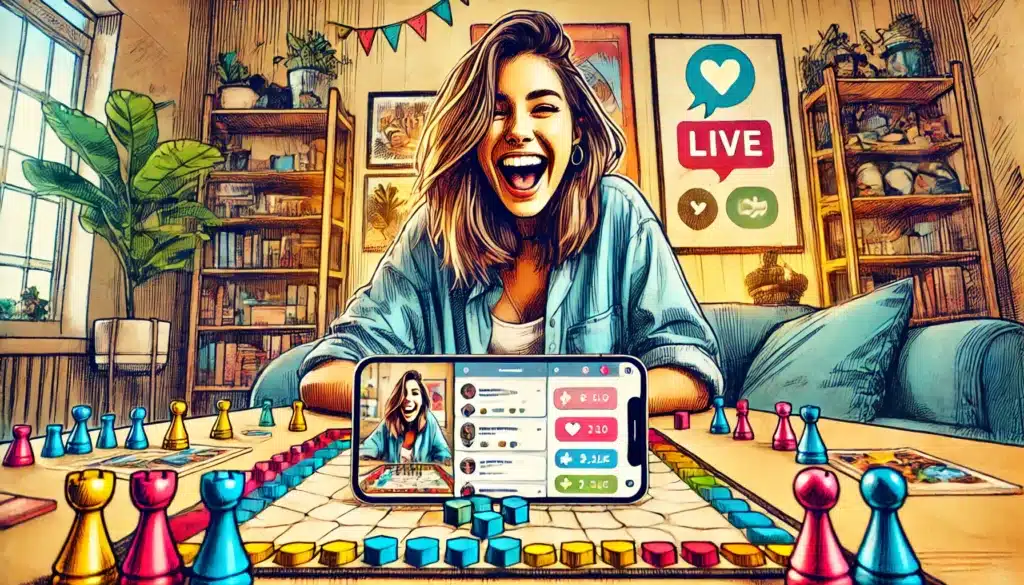
Unboxing and Tutorial Trends
Unboxing and tutorial videos have become essential elements in showcasing board games online, serving as gateways for audiences to discover, understand, and appreciate the depth of gameplay. The allure of watching a game unfold from its packaging or learning its mechanics through engaging visuals and commentary has captivated viewers, transforming these experiences into viral phenomena.
- ASMR unboxings offer a sensory experience, with the soothing sounds of cardboard and plastic enticing viewers.
- Fast-forwarded tutorials condense complex rules into quick, digestible explanations.
- First-play impressions capture the excitement and spontaneity of discovering a game for the first time.
- Comedic playthroughs inject humor, making gameplay accessible and enjoyable for wider audiences.
- Theme-focused walkthroughs highlight specific elements, such as fantasy lore or strategic depth.
- Empowering how-to guides turn novice players into confident strategists.
- Artistic stop-motion animations bring game components to life in a creative narrative.
- Enthralling live streams engage audiences in real-time, fostering interactive play sessions.
- Cinematic reveal sequences showcase the game’s thematic elements with dramatic flair.
- In-depth strategy guides offer advanced insights into gameplay mechanics and tactical planning.
- Comparison videos provide side-by-side analyses of similar games, aiding purchase decisions.
- Puzzle-solving sessions feature cooperative solutions, inviting collaborative engagement.
- Challenge videos test players’ skills against unique, often humorous constraints.
- Flashback Fridays revisit classic games with modern perspectives and insights.
- Solo adventures demonstrate how to enjoy games independently, emphasizing adaptability.
- Community spotlights highlight fan creations and house rules, celebrating shared creativity.
- Evolutive gameplay videos depict story arcs, showcasing ongoing campaign progress.
- Iconic game moments capture decisive plays, showcasing the climactic nature of tabletop gaming.
These video styles leverage visual storytelling to transcend the limitations of static instructions or text-heavy manuals. By providing step-by-step guidance or inviting viewers to experience the thrill of gaming alongside creators, these trends empower audiences to become active participants in the gaming community.
Both creators and publishers benefit from these trends, as they enhance visibility, engage audiences, and contribute to a game’s momentum. The variety of styles accommodates diverse viewer preferences, ensuring that players of all levels and interests find content that resonates with them. Consequently, these videos serve as both an introduction and an invitation—welcoming viewers into the immersive world of board gaming.
As online content continues to diversify, unboxing and tutorial trends will remain vital in presenting board games as accessible, enjoyable, and multifaceted experiences. By nurturing curiosity and fostering understanding, these videos invite players—both new and seasoned—to explore the endless potential of the tabletop universe.
Opportunities and Challenges for the Board Game Industry
As the board game industry embraces the social media boom, it faces both opportunities and challenges in adapting to this dynamic landscape. The digital era offers unprecedented avenues for engagement, innovation, and growth, but it also demands agility, creativity, and strategic foresight. Industry players must navigate an ecosystem where the rapid pace of technological advancement constantly reshapes consumer expectations.
The opportunities for the board game industry are vast and varied. Social media platforms provide an expansive stage on which games can captivate global audiences, breaking free from traditional distribution channels. The ability to reach millions of potential players through tailored content and targeted campaigns offers significant growth potential. Furthermore, the feedback loop facilitated by these platforms allows for real-time insights, enabling creators to refine products and respond to player preferences with unprecedented speed.
However, the challenges are equally formidable. The saturation of content on social media demands that board game publishers differentiate themselves in a crowded field. The pressure to continuously produce engaging, high-quality content can be taxing, necessitating a careful balance between innovation and sustainability. Additionally, the transient nature of social media trends means that what captures attention today may fade into obscurity tomorrow, requiring constant adaptation and reinvention.
⚔️ Fantasy RPG Random Tables Books
Make life as a Gamemaster easier…
If you play Dungeons & Dragons, Pathfinder, or other fantasy RPGs, this
RPG random tables series
is packed with encounters, NPCs, treasure, and more. Available in eBook or print—either way, you’ll have a wealth of adventure ideas at your fingertips.
Amidst these challenges, the board game industry must also contend with issues related to representation, inclusivity, and accessibility. As games reach wider audiences, ensuring that they reflect diverse voices and perspectives becomes increasingly important. Publishers must be proactive in creating spaces where all players feel welcome and represented, using social media not just as a marketing tool but as a platform for social change.
Marketing in the Age of the Algorithm
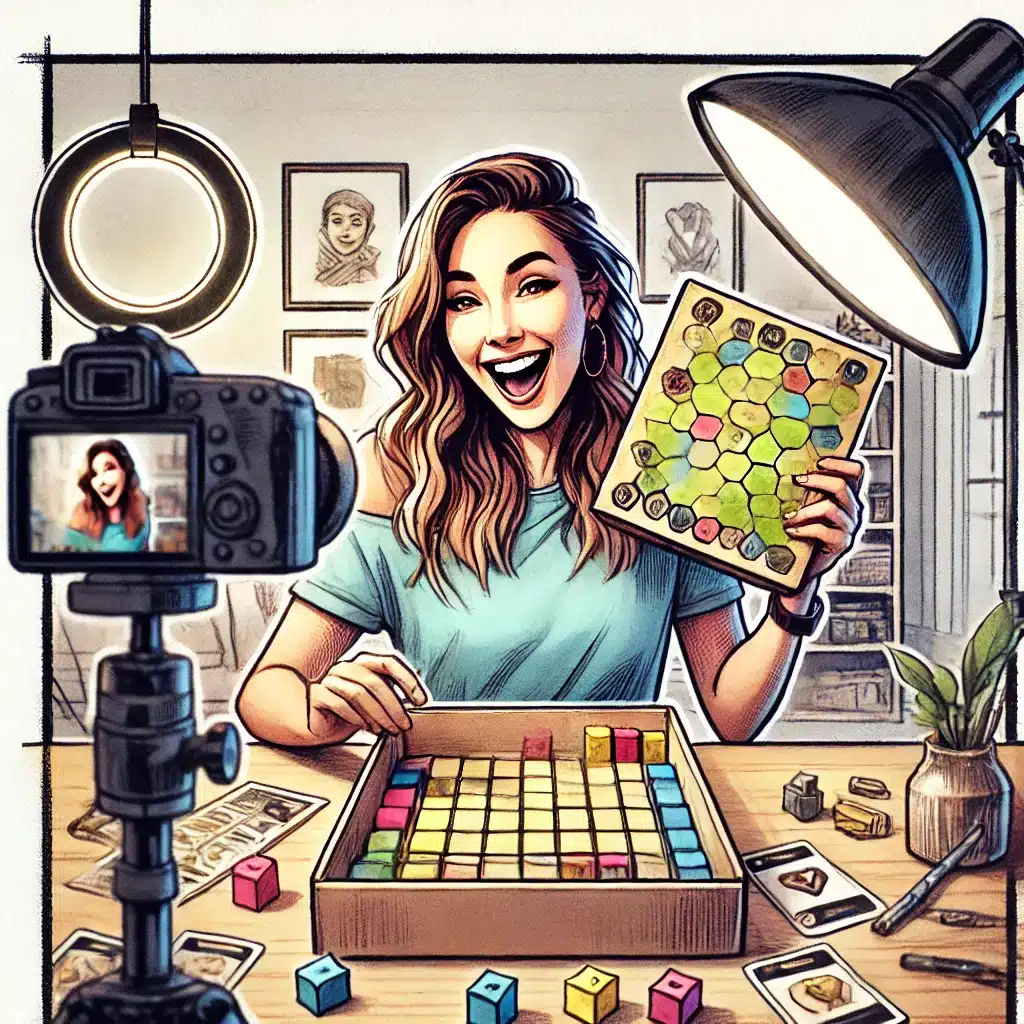
In the age of algorithms, marketing strategies must evolve to keep pace with the complexities of digital landscapes dominated by social media. For the board game industry, this means embracing innovative tactics that leverage these platforms’ unique features to capture and retain player interest. By focusing on authenticity, engagement, and creativity, marketers can tap into the algorithmic flow to elevate their games.
These strategies shift the marketing paradigm from traditional to digital, focusing on creating authentic connections rather than merely pushing products. The age of the algorithm places a premium on creativity and adaptability, rewarding companies that can weave innovative storytelling and community involvement into their campaigns.
Embracing this digitized marketing landscape offers the board game industry a chance to redefine itself, focusing on player-driven experiences that transcend conventional boundaries. By leveraging the power of algorithms, publishers can craft compelling narratives that resonate within the fast-paced digital realm, ensuring that their games not only reach players but captivate them.
As the industry continues to evolve, marketers must remain vigilant in adapting and refining their strategies to seize the opportunities and meet the challenges presented by social media. With the right approach, the age of the algorithm can be a period of unprecedented growth and innovation for board games, propelling them into the forefront of entertainment.
Designing for Shareability
In the modern board game landscape, designing for shareability has become a critical consideration. This shift underscores the importance of creating games that are not only enjoyable to play but also engaging to experience and share with others online. By focusing on elements that enhance shareability, designers can broaden the appeal of their games and foster organic promotion across social media platforms.
The key to achieving shareability lies in understanding the balance between gameplay mechanics and visual elements. Games that offer striking visual components or feature clever mechanics are more likely to capture the imagination of players and observers alike, encouraging them to share their experiences with broader audiences. This approach not only attracts new players but also strengthens the connection between the game and its community.
| Game Feature | Example | Benefits | Potential Trade-offs |
|---|---|---|---|
| Shorter game time | Quick rounds in The Mind | Increases accessibility | May sacrifice complexity |
| Photogenic components | Stunning cards in Wingspan | Enhances visual appeal | May increase production cost |
| Modular content | Expansions in Gloomhaven | Extends replayability | Can complicate base game |
| Vibrant color palettes | Bold tiles in Azul | Attracts attention online | May not suit all themes |
| Creative narratives | Story arcs in Pandemic | Fosters emotional investment | Higher development time |
| Interactive mechanics | Cooperative play in The Crew | Encourages social play | May require larger groups |
| Portable game size | Compact design in Jaipur | Easy to transport and share | May limit component detail |
| Innovative themes | Nature setting in Cascadia | Draws in diverse players | Requires thorough research |
| Iconic illustrations | Unique art in Dixit | Makes for shareable posts | Can overshadow gameplay |
| Digital adaptations | Tabletop simulator versions | Broaden reach and versatility | Costs and technical challenges |
| Engaging solo modes | Single-player in Nemesis | Expands target audience | Can dilute social aspect |
| Intriguing mysteries | Hidden objectives in Deception | Captivates puzzle solvers | Can limit replay value |
Design elements that consider shareability not only showcase a game’s visual and thematic appeal but also elevate the experience for players. This intentional design encourages interaction, creating a dynamic space where games are experienced collectively. By focusing on shareability, developers can craft games that resonate with audiences eager to engage, connect, and share.
Ultimately, designing for shareability requires an understanding of the interplay between player engagement and social media dynamics. By crafting games that are visually captivating and rich in storytelling, developers can foster communities that celebrate shared experiences, strengthening the bond between game and player. This approach ensures that each game transcends its functional role, becoming a vibrant social artifact that embodies the joy of play.
Avoiding Burnout and Overexposure
As the board game industry continues to embrace social media, maintaining a balance between visibility and overexposure becomes critical. Ensuring ongoing engagement without exhausting audiences requires strategic foresight, adaptability, and a nuanced understanding of content creation and distribution dynamics. By focusing on sustainable practices, creators and publishers can nurture lasting relationships with their communities while fostering excitement and anticipation.
- Spacing releases ensures that each game receives the attention it deserves without overwhelming audiences.
- Varying content styles keeps engagement fresh, appealing to diverse viewer preferences.
- Spotlighting niche games introduces variety and extends the reach of lesser-known titles.
- Encouraging community contributions fosters organic interest and collaborative creativity.
- Implementing breaks between major campaigns allows for audience reflection and anticipation.
- Maintaining consistency in tone and quality builds trust and reliability among followers.
- Highlighting unique narratives or game mechanics rejuvenates interest in longstanding titles.
- Organizing themed events or seasons encourages cyclical interest and replayability.
- Engaging in targeted promotion matches content with the right audience segment.
- Celebrating milestones offers moments of gratitude and reinforces community bonds.
- Expanding collaborations introduces fresh perspectives and revitalized excitement.
- Nurturing long-term partnerships strengthens brand and community alignment.
- Using feedback loops improves future content by gathering user insights.
- Offering exclusive content for members fosters loyalty and commitment.
- Encouraging exploration of diverse genres broadens engagement appeal.
- Practicing transparency allows for authentic communication with audiences.
These tips empower creators and publishers to navigate the complexities of audience dynamics on social media, ensuring sustained interest without risking fatigue or burnout. By striking a balance between innovation and familiarity, content remains engaging and community-driven.
As the landscape of board gaming continues to evolve, maintaining a steady pace of content creation and distribution will ensure that games remain vibrant, accessible, and celebrated. By prioritizing the needs of players and focusing on sustainable practices, the industry can continue to thrive, fostering a culturally rich environment that celebrates the art of play.
In this exciting era of board gaming, where tradition meets innovation, the journey toward lasting engagement lies in understanding and appreciating the delicate ebb and flow of audience dynamics, crafting experiences that resonate deeply and joyfully.
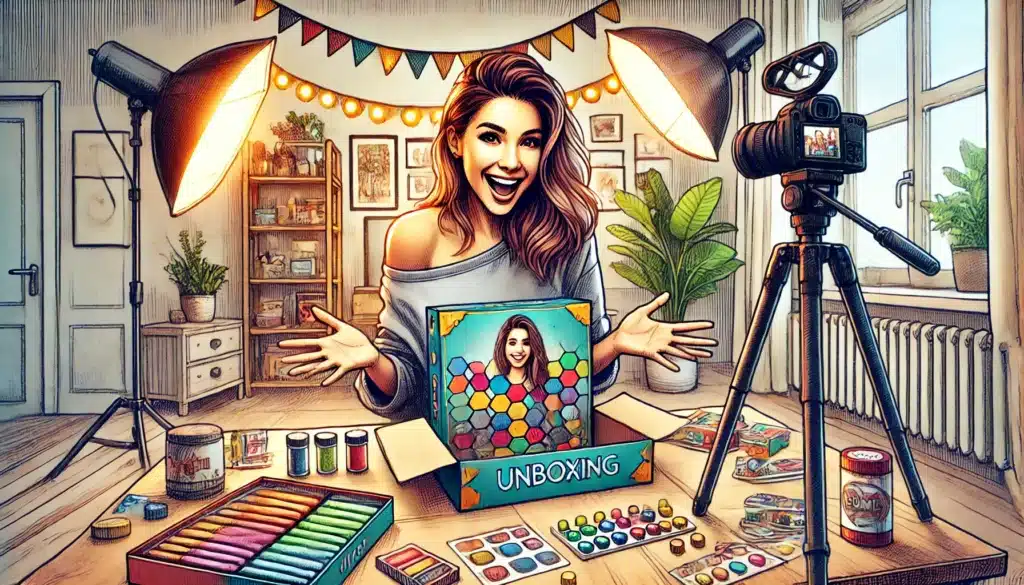
FINAL THOUGHTS
As we navigate this digital age, the intersection of social media and board games presents a remarkable chapter in the evolution of tabletop entertainment. Platforms like TikTok and Instagram have not only revitalized interest in board games but have also redefined how they are shared, experienced, and celebrated by diverse audiences worldwide. This modern renaissance, fueled by visual storytelling, influencer engagement, and community-driven content, underscores the limitless potential of creativity and connection in the digital realm.
The sustained buzz generated by social media has opened doors to innovative game formats, cross-media storytelling, and new marketing paradigms. It has provided a platform for both creators and enthusiasts to explore the art of gaming in ways previously unimagined. By embracing the digital landscape’s dynamism and fostering inclusivity, the board game industry can capture the zeitgeist of the age, ensuring that games remain not only a source of entertainment but a vibrant catalyst for community and culture.
Try my AI Tabletop RPG generators...and an extensive library of content!
Looking ahead, the future of board games in this social era is bright with possibilities. The ongoing engagement and enthusiasm of players and creators alike hint at a continued tradition where creativity, accessibility, and shared experiences remain central. As these social platforms continue to inspire and influence, board games will undoubtedly continue to evolve, adapting to the rhythms of a world where the art of play is celebrated as both a personal journey and a collective adventure.

